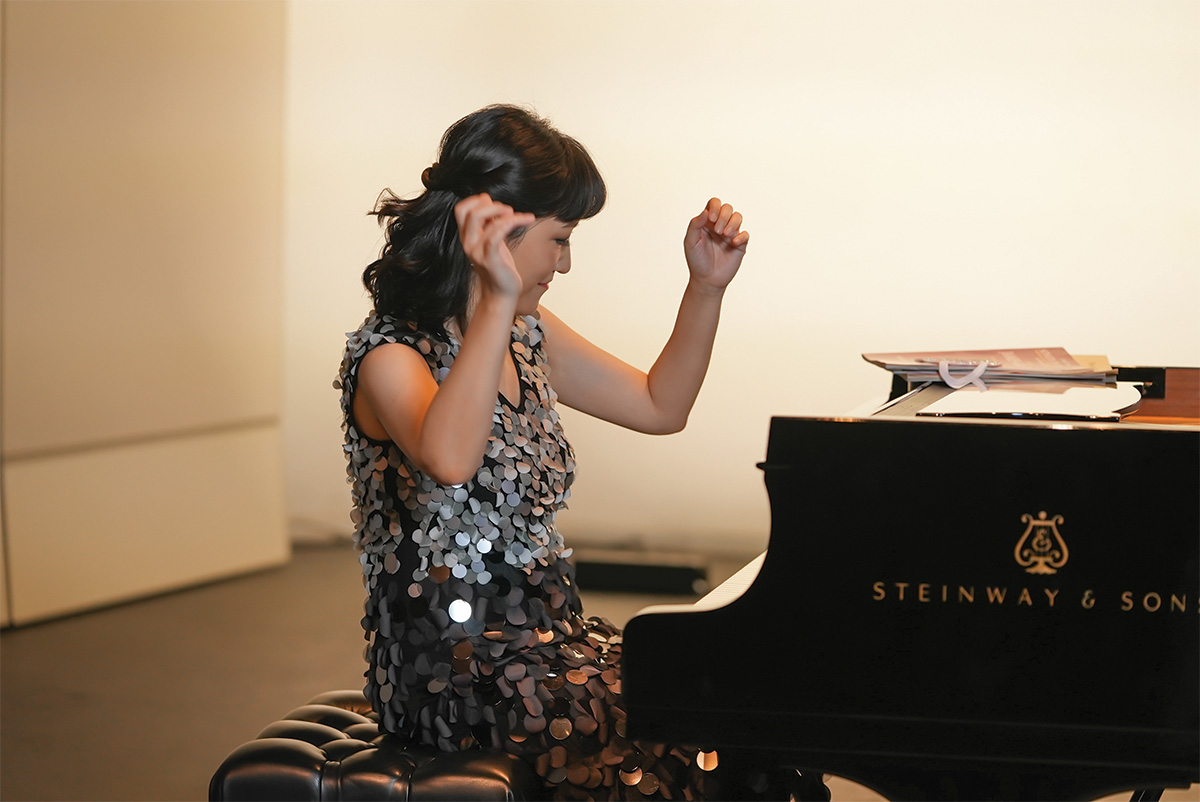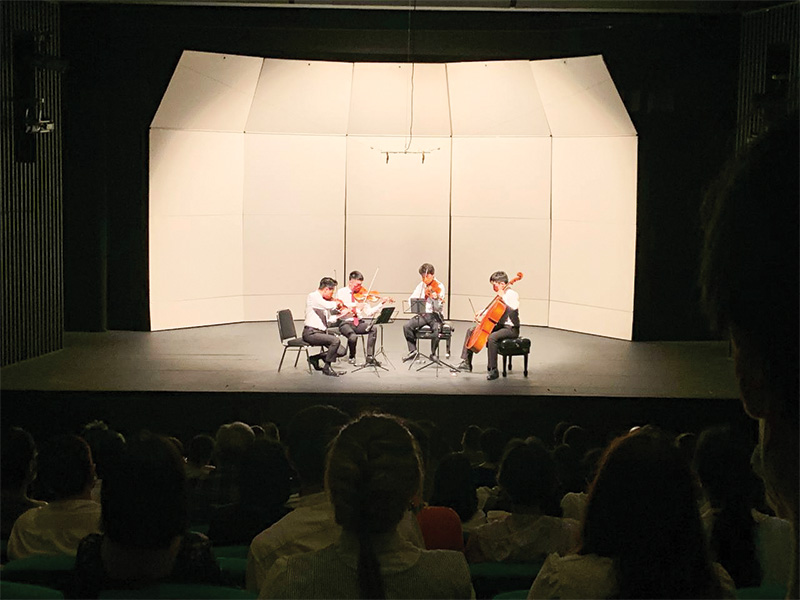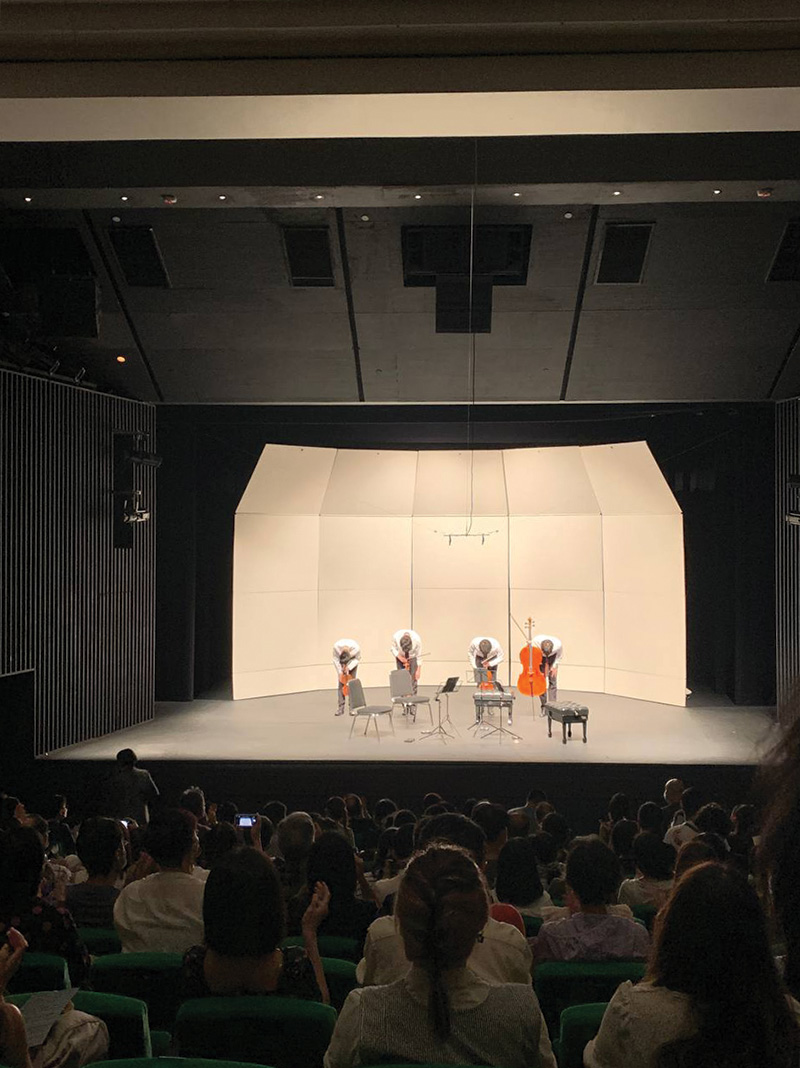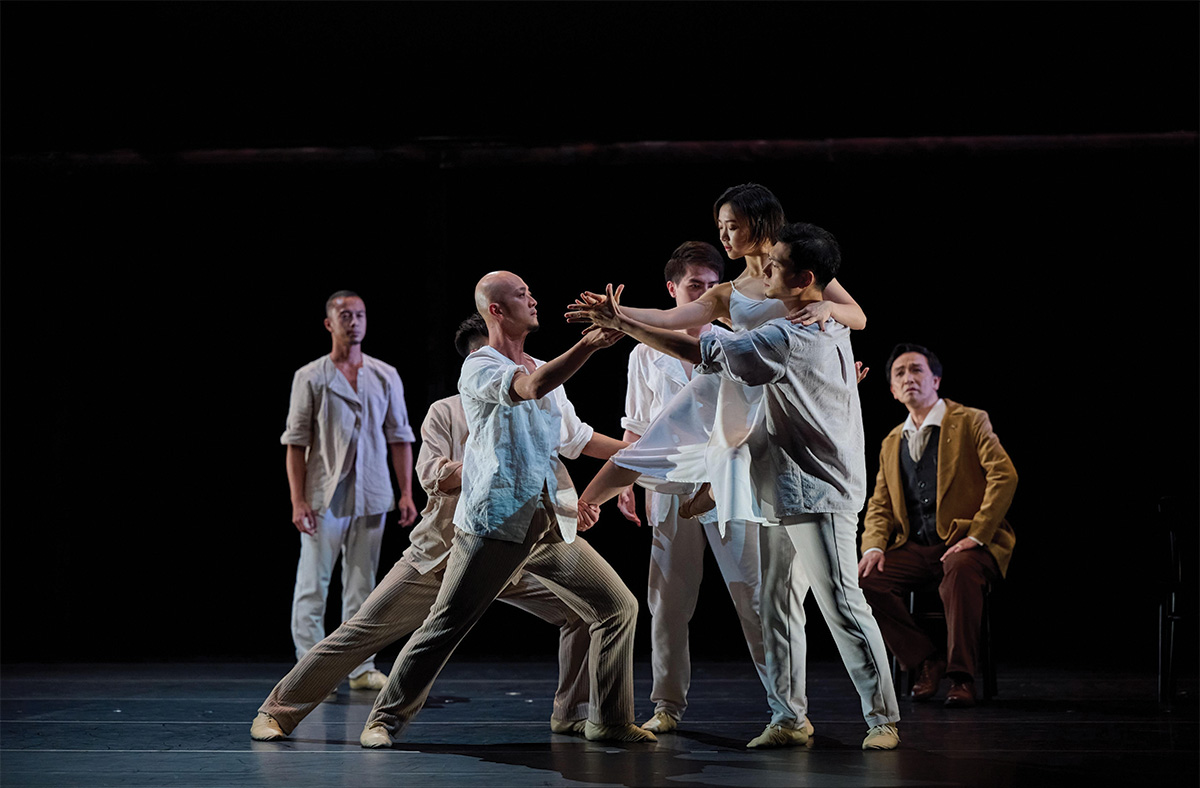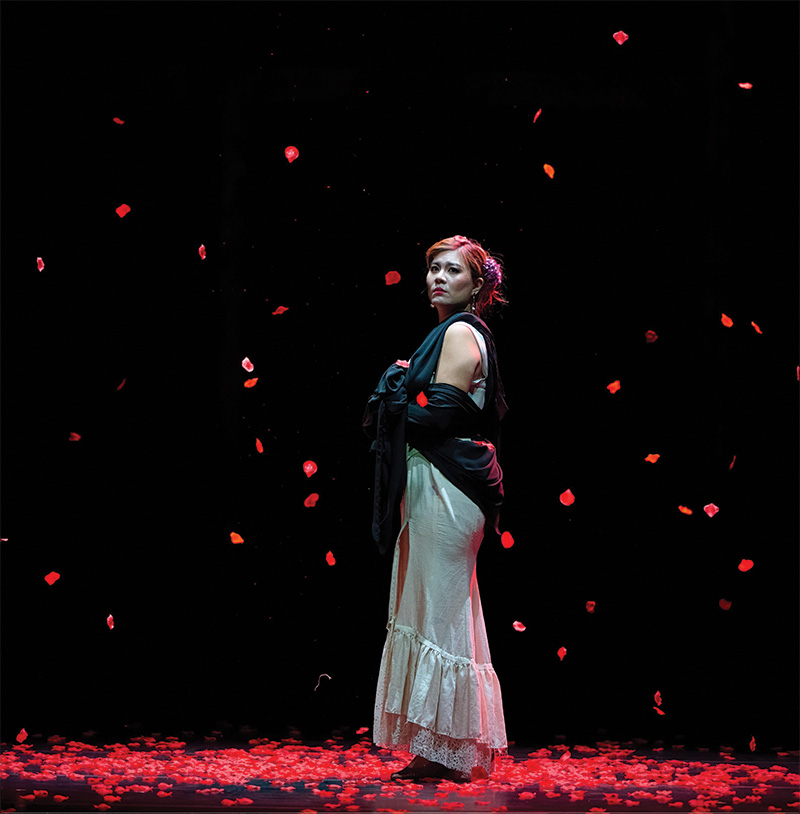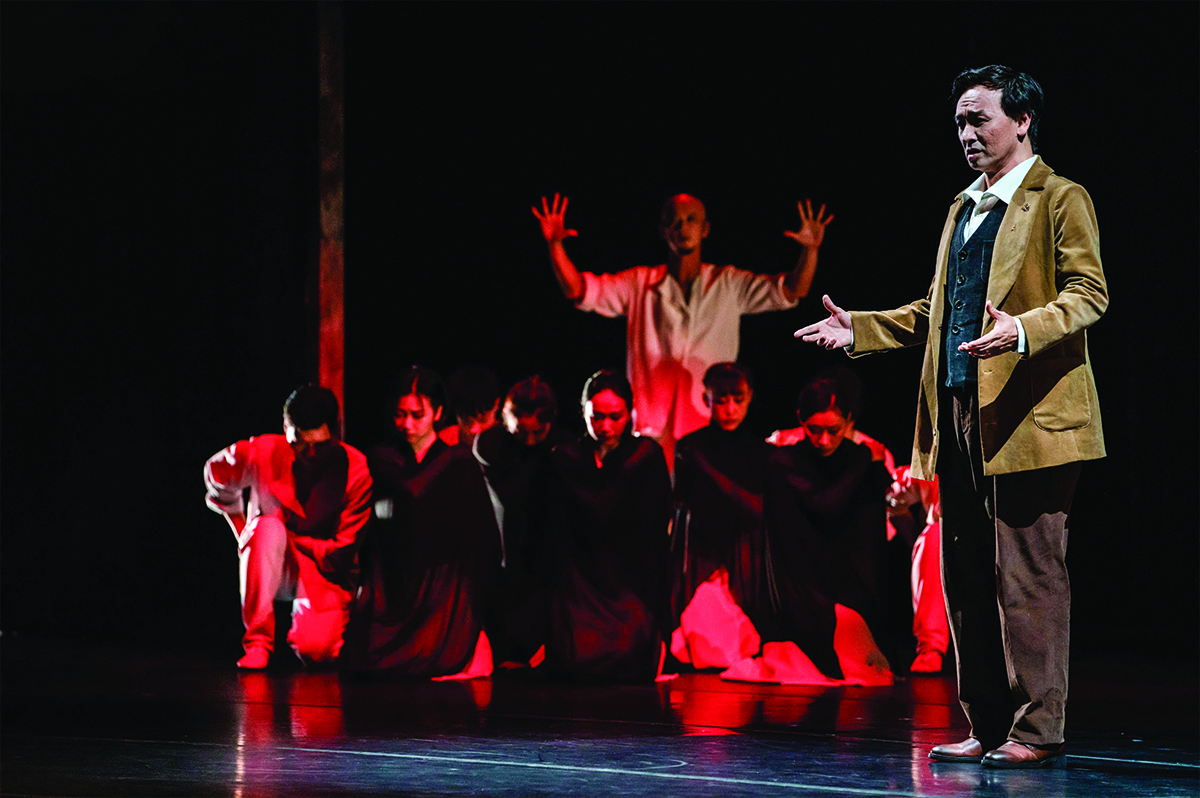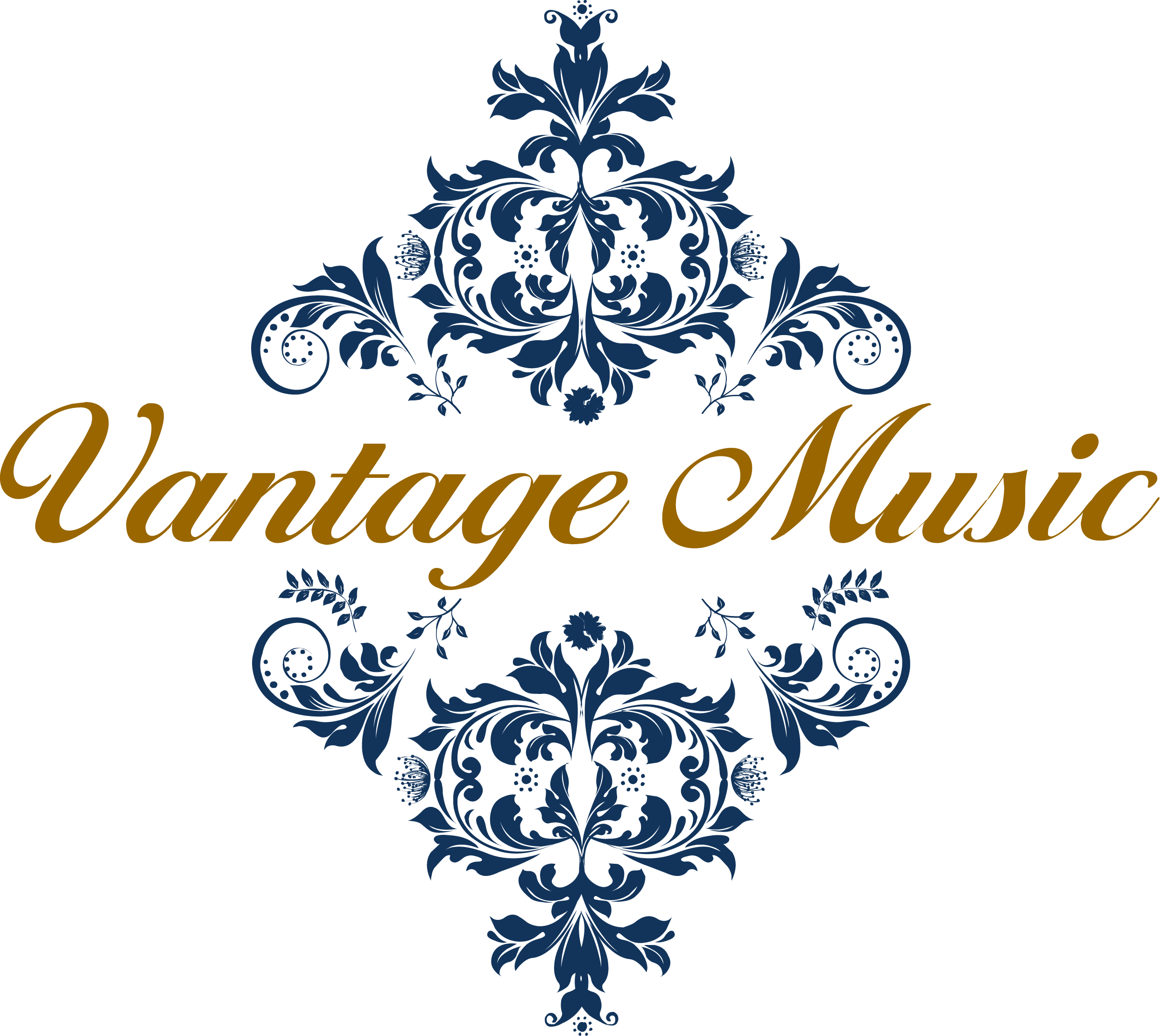The first half of the programme consisted of Liebermann’s Sonata for flute and piano, Pierre Sancan’s Sonatine for flute and piano and Debussy’s Prelude to the Afternoon of a Faun. All offered Matthew ample opportunities to exemplify his wizardry of flute articulations and what the instrument is capable of.
The two-movement Liebermann’s Sonata Op. 23 was a commission piece dedicated to flautist Paula Robison where she premiered the piece together with pianist Jean-Yves Thibaudet in 1988. A continuation of Classical and Romantic traditions, techniques such as augmentation, diminution, retrograde and sequence are found and it became a beloved, well-established work in the standard repertoire.
Pierre Sancan’s Sonatine for flute and piano, was written in 1946 as an exam piece for the Paris Conservatory and it is probably the most popular work among the composer’s repertoire. The Sonatine is impressionistic, sparkles with contemporary techniques and offers both the flautist and pianist the opportunities to execute cadenzas and solos.
Impressionism continued into the last piece of the first half of the programme – Prelude to the Afternoon of a Faun (or Prélude à l’après-midi d’un faune in French) took root in the poem, by the French poet Stéphane Mallarmé, with the same name. The performance was an exemplar of Debussy’s charm and exquisiteness, yet vividly captured the poem’s mood and atmosphere.
The second half began with French Baroque violinist and composer Leclair’s piece, which could be played on either the violin or the flute. It was luminous and invigorating and there was a great deal of variety in style. Franck’s Sonata, originally written for the violin, dedicated to the marriage of violinist Eugène Ysaÿe, was appealing with its songlike melodies and the passionate dialogue between the two instruments. It was certainly a jewel among the very few chamber compositions from this French composer.
The concert was drawn to a wonderful close with an intermezzo from the Italian opera Cavalleria Rusticana from the verismo era, an encore with great passion and insight.
Our readers may recall Vantage’s interview with the Cong Quartet in 2021. This was one of the our most anticipated concerts in this summer.
Mozart’s quartet began with a 22-bar Adagio with a more advanced and complex tonal anarchy than simply passing discords and that lent the quartet its nickname, “Dissonance”. The Cong Quartet was able to play the four-movement quartet with good expression, animated, cantabile, lively and spirited.
For the second piece of the programme, composer Adrian Wong gave a brief introduction to the première – on the philosophy of different means of eggs cooking.
Mendelssohn wrote the A minor string quartet when he was 18, influenced by Beethoven’s passing. The Adagio first movement was gentle, calm, balanced and the final Presto was startling and bright. An interesting matching set for the youthful and energetic music ensemble.
The audience was lucky to enjoy three encore pieces from Beethoven, Siegfried Fietz and Smetana, bringing the concert to a wonderful close.
Maria de Buenos Aires features director and renowned choreographer Helen Lai, conductor Vivian Ip, mezzo-soprano Carol Lin, tenor David Quah and narrator Fernando Rezk and the City Contemporary Dance Company.
The tango opera was first premiered in 1968. The libretto, written by the Uruguayan-Argentine poet Horacio Ferrer, wove around Maria (Ms Carol Lin’s title role), a fictitious prostitute in the complicated underworld of the title city. Piazzolla’s orchestration isn’t a typical tango arrangement but manifests great variations with the unmistakable sound of the bandoneon, combined with the guitar, chamber ensemble and the piano to express the richness, fascinating psychological depth of the Argentinian composer’s only work for musical theatre. The choreography visualised the themes of the operetta and made the fully staged production that amalgamated poetry, music and dance particularly captivating.

